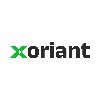
i
CitiusTech
Filter interviews by
CitiusTech Data Engineer Interview Questions and Answers
17 Interview questions
SCD type2 table is used to track historical changes in data by creating new records for each change.
Contains current and historical data
New records are created for each change
Includes effective start and end dates for each record
Requires additional columns like surrogate keys and version numbers
Used for slowly changing dimensions in data warehousing
Improving query performance by optimizing indexes, using proper data types, and minimizing data retrieval.
Optimize indexes on frequently queried columns
Use proper data types to reduce storage space and improve query speed
Minimize data retrieval by only selecting necessary columns
Avoid using SELECT * in queries
Use query execution plans to identify bottlenecks and optimize accordingly
List is mutable, tuple is immutable in Python.
List can be modified after creation, tuple cannot be modified.
List uses square brackets [], tuple uses parentheses ().
Lists are used for collections of items that may need to be changed, tuples are used for fixed collections of items.
Example: list_example = [1, 2, 3], tuple_example = (4, 5, 6)
repartition increases partitions while coalesce decreases partitions in Spark
repartition shuffles data and can be used for increasing partitions for parallelism
coalesce reduces partitions without shuffling data, useful for reducing overhead
repartition is more expensive than coalesce as it involves data movement
example: df.repartition(10) vs df.coalesce(5)
What people are saying about CitiusTech






To create a pipeline in ADF, you can use the Azure Data Factory UI or code-based approach.
Use Azure Data Factory UI to visually create and manage pipelines
Use code-based approach with JSON to define pipelines and activities
Add activities such as data movement, data transformation, and data processing to the pipeline
Set up triggers and schedules for the pipeline to run automatically
getmetadata is used to retrieve metadata information about a dataset or data source.
getmetadata can provide information about the structure, format, and properties of the data.
It can be used to understand the data schema, column names, data types, and any constraints or relationships.
This information is helpful for data engineers to properly process, transform, and analyze the data.
For example, getmetadata can be ...
Slowly changing dimensions refer to data warehouse dimensions that change slowly over time.
SCDs are used to track historical changes in data over time.
There are three types of SCDs - Type 1, Type 2, and Type 3.
Type 1 SCDs overwrite old data with new data, Type 2 creates new records for changes, and Type 3 maintains both old and new data in separate columns.
Example: A customer's address changing would be a Type 2 S...
Parquet file format is a columnar storage format used for efficient data storage and processing.
Parquet files store data in a columnar format, which allows for efficient querying and processing of specific columns without reading the entire file.
It supports complex nested data structures like arrays and maps.
Parquet files are highly compressed, reducing storage space and improving query performance.
It is commonly ...
To read a file in Databricks, you can use the Databricks File System (DBFS) or Spark APIs.
Use dbutils.fs.ls('dbfs:/path/to/file') to list files in DBFS
Use spark.read.format('csv').load('dbfs:/path/to/file') to read a CSV file
Use spark.read.format('parquet').load('dbfs:/path/to/file') to read a Parquet file
Normal cluster is used for interactive workloads while job cluster is used for batch processing in Databricks.
Normal cluster is used for ad-hoc queries and exploratory data analysis.
Job cluster is used for running scheduled jobs and batch processing tasks.
Normal cluster is terminated after a period of inactivity, while job cluster is terminated after the job completes.
Normal cluster is more cost-effective for shor...
CitiusTech Data Engineer Interview Experiences
5 interviews found
I applied via Naukri.com and was interviewed in Oct 2024. There were 2 interview rounds.
(2 Questions)
- Q1. Azure Scenario based questions
- Q2. Pyspark Coding based questions
(2 Questions)
- Q1. ADF, Databricks related question
- Q2. Spark Performance problem and scenarios
- Ans.
Spark performance problems can arise due to inefficient code, data skew, resource constraints, and improper configuration.
Inefficient code can lead to slow performance, such as using collect() on large datasets.
Data skew can cause uneven distribution of data across partitions, impacting processing time.
Resource constraints like insufficient memory or CPU can result in slow Spark jobs.
Improper configuration settings, su...
Skills evaluated in this interview
I applied via Naukri.com and was interviewed in Sep 2024. There was 1 interview round.
(14 Questions)
- Q1. How to create pipeline in adf?
- Ans.
To create a pipeline in ADF, you can use the Azure Data Factory UI or code-based approach.
Use Azure Data Factory UI to visually create and manage pipelines
Use code-based approach with JSON to define pipelines and activities
Add activities such as data movement, data transformation, and data processing to the pipeline
Set up triggers and schedules for the pipeline to run automatically
- Q2. Diffrent types of activities in pipelines
- Ans.
Activities in pipelines include data extraction, transformation, loading, and monitoring.
Data extraction: Retrieving data from various sources such as databases, APIs, and files.
Data transformation: Cleaning, filtering, and structuring data for analysis.
Data loading: Loading processed data into a data warehouse or database.
Monitoring: Tracking the performance and health of the pipeline to ensure data quality and reliab...
- Q3. What is use of getmetadata
- Ans.
getmetadata is used to retrieve metadata information about a dataset or data source.
getmetadata can provide information about the structure, format, and properties of the data.
It can be used to understand the data schema, column names, data types, and any constraints or relationships.
This information is helpful for data engineers to properly process, transform, and analyze the data.
For example, getmetadata can be used ...
- Q4. Diffrent types of triggers
- Ans.
Triggers in databases are special stored procedures that are automatically executed when certain events occur.
Types of triggers include: DML triggers (for INSERT, UPDATE, DELETE operations), DDL triggers (for CREATE, ALTER, DROP operations), and logon triggers.
Triggers can be classified as row-level triggers (executed once for each row affected by the triggering event) or statement-level triggers (executed once for eac...
- Q5. Diffrence between normal cluster and job cluster in databricks
- Ans.
Normal cluster is used for interactive workloads while job cluster is used for batch processing in Databricks.
Normal cluster is used for ad-hoc queries and exploratory data analysis.
Job cluster is used for running scheduled jobs and batch processing tasks.
Normal cluster is terminated after a period of inactivity, while job cluster is terminated after the job completes.
Normal cluster is more cost-effective for short-liv...
- Q6. What is slowly changing dimensions
- Ans.
Slowly changing dimensions refer to data warehouse dimensions that change slowly over time.
SCDs are used to track historical changes in data over time.
There are three types of SCDs - Type 1, Type 2, and Type 3.
Type 1 SCDs overwrite old data with new data, Type 2 creates new records for changes, and Type 3 maintains both old and new data in separate columns.
Example: A customer's address changing would be a Type 2 SCD.
Ex...
- Q7. Incremental load
- Q8. With use in python
- Ans.
Use Python's 'with' statement to ensure proper resource management and exception handling.
Use 'with' statement to automatically close files after use
Helps in managing resources like database connections
Ensures proper cleanup even in case of exceptions
- Q9. List vs tuple in python
- Ans.
List is mutable, tuple is immutable in Python.
List can be modified after creation, tuple cannot be modified.
List uses square brackets [], tuple uses parentheses ().
Lists are used for collections of items that may need to be changed, tuples are used for fixed collections of items.
Example: list_example = [1, 2, 3], tuple_example = (4, 5, 6)
- Q10. Datalake 1 vs datalake2
- Ans.
Datalake 1 and Datalake 2 are both storage systems for big data, but they may differ in terms of architecture, scalability, and use cases.
Datalake 1 may use a Hadoop-based architecture while Datalake 2 may use a cloud-based architecture like AWS S3 or Azure Data Lake Storage.
Datalake 1 may be more suitable for on-premise data storage and processing, while Datalake 2 may offer better scalability and flexibility for clou...
- Q11. How to read a file in databricks
- Ans.
To read a file in Databricks, you can use the Databricks File System (DBFS) or Spark APIs.
Use dbutils.fs.ls('dbfs:/path/to/file') to list files in DBFS
Use spark.read.format('csv').load('dbfs:/path/to/file') to read a CSV file
Use spark.read.format('parquet').load('dbfs:/path/to/file') to read a Parquet file
- Q12. Star vs snowflake schema
- Ans.
Star schema is denormalized with one central fact table surrounded by dimension tables, while snowflake schema is normalized with multiple related dimension tables.
Star schema is easier to understand and query due to denormalization.
Snowflake schema saves storage space by normalizing data.
Star schema is better for data warehousing and OLAP applications.
Snowflake schema is better for OLTP systems with complex relationsh...
- Q13. Repartition vs coalesece
- Ans.
repartition increases partitions while coalesce decreases partitions in Spark
repartition shuffles data and can be used for increasing partitions for parallelism
coalesce reduces partitions without shuffling data, useful for reducing overhead
repartition is more expensive than coalesce as it involves data movement
example: df.repartition(10) vs df.coalesce(5)
- Q14. Parquet file uses
- Ans.
Parquet file format is a columnar storage format used for efficient data storage and processing.
Parquet files store data in a columnar format, which allows for efficient querying and processing of specific columns without reading the entire file.
It supports complex nested data structures like arrays and maps.
Parquet files are highly compressed, reducing storage space and improving query performance.
It is commonly used ...
Skills evaluated in this interview
(2 Questions)
- Q1. What can you improve the query performance?
- Ans.
Improving query performance by optimizing indexes, using proper data types, and minimizing data retrieval.
Optimize indexes on frequently queried columns
Use proper data types to reduce storage space and improve query speed
Minimize data retrieval by only selecting necessary columns
Avoid using SELECT * in queries
Use query execution plans to identify bottlenecks and optimize accordingly
- Q2. What id SCD type2 table?
- Ans.
SCD type2 table is used to track historical changes in data by creating new records for each change.
Contains current and historical data
New records are created for each change
Includes effective start and end dates for each record
Requires additional columns like surrogate keys and version numbers
Used for slowly changing dimensions in data warehousing
(2 Questions)
- Q1. Use of display in databricks
- Ans.
Display in Databricks is used to visualize data in a tabular format or as charts/graphs.
Display function is used to show data in a tabular format in Databricks notebooks.
It can also be used to create visualizations like charts and graphs.
Display can be customized with different options like title, labels, and chart types.
- Q2. How to create workflow in databrics
- Ans.
To create a workflow in Databricks, use Databricks Jobs or Databricks Notebooks with scheduling capabilities.
Use Databricks Jobs to create and schedule workflows in Databricks.
Utilize Databricks Notebooks to define the workflow steps and dependencies.
Leverage Databricks Jobs API for programmatic workflow creation and management.
Use Databricks Jobs UI to visually design and schedule workflows.
Integrate with Databricks D...
Skills evaluated in this interview
(1 Question)
- Q1. All abt sql and databricks Then some questions from adf
Interview questions from similar companies

I applied via Naukri.com and was interviewed before May 2018. There were 5 interview rounds.
Interview Questionnaire
4 Questions
- Q1. Telephonic technical
- Q2. Core Java related exception handling ,design pattern ,oops solid design principle, rest API, different annotations of spring and jpa
- Q3. Same questions on telephonic round but detailed elaborate and given simple problem statement we had to justify that why it's time n space complexity valid. Rest API questions hibernate orm use
- Q4. Manager round just to check whether you have actually worked on project or not stress testing performance questions scenario questions
Interview Preparation Tips
Skills: Core Java sevlet JSP hibernate spring rest API, Communication, Body Language, Problem Solving, Analytical Skills, Decision Making Skills
Duration: 1-4 weeks

I applied via LinkedIn and was interviewed before Jun 2020. There were 3 interview rounds.
Interview Questionnaire
1 Question
- Q1. Basics Of JS

I applied via Naukri.com and was interviewed in Jun 2020. There was 1 interview round.
Interview Questionnaire
1 Question
- Q1. Questions were according to the skills in the resume .spark,SQL,python and a bit of intro of Scala .

I applied via LinkedIn and was interviewed before Feb 2021. There were 3 interview rounds.
(1 Question)
- Q1. Just basic questions like Method overloading, riding Abstract and interface Use of static Etc..
Basic Java programs related to string and array manipulation
(1 Question)
- Q1. Jus basic questions related to Work culture and privacy
Interview Preparation Tips
- Java

I applied via Company Website and was interviewed in Apr 2020. There were 4 interview rounds.
Interview Questionnaire
2 Questions
- Q1. Are you updating day by day yourself in technology ?
- Q2. Yes, means you will definitely placed in technosoft.
Interview Preparation Tips
CitiusTech Interview FAQs
Tell us how to improve this page.
CitiusTech Interviews By Designations
- CitiusTech Senior Software Engineer Interview Questions
- CitiusTech Technical Lead Interview Questions
- CitiusTech Software Engineer Interview Questions
- CitiusTech Software Engineer Trainee Interview Questions
- CitiusTech Software Developer Interview Questions
- CitiusTech Technical Specialist Interview Questions
- CitiusTech Senior Software Developer Interview Questions
- CitiusTech Software Developer Trainee Interview Questions
- Show more
Interview Questions for Popular Designations
- Software Engineer Interview Questions
- Senior Engineer Interview Questions
- System Engineer Interview Questions
- Data Analyst Interview Questions
- Senior Data Engineer Interview Questions
- Developer Interview Questions
- Azure Data Engineer Interview Questions
- Big Data Engineer Interview Questions
- Show more
Overall Interview Experience Rating
based on 5 interview experiences
Difficulty level
Duration
Data Engineer Interview Questions from Similar Companies
CitiusTech Data Engineer Reviews and Ratings
based on 4 reviews
Rating in categories
|
Senior Software Engineer
2.7k
salaries
| ₹5.8 L/yr - ₹20.2 L/yr |
|
Technical Lead
2.1k
salaries
| ₹7.5 L/yr - ₹28 L/yr |
|
Software Engineer
1.3k
salaries
| ₹3 L/yr - ₹11.1 L/yr |
|
Technical Lead 1
393
salaries
| ₹7 L/yr - ₹25.5 L/yr |
|
Technical Lead 2
334
salaries
| ₹8 L/yr - ₹29 L/yr |

Accenture

Capgemini

Xoriant

HTC Global Services
- Home >
- Interviews >
- CitiusTech Interview Questions















